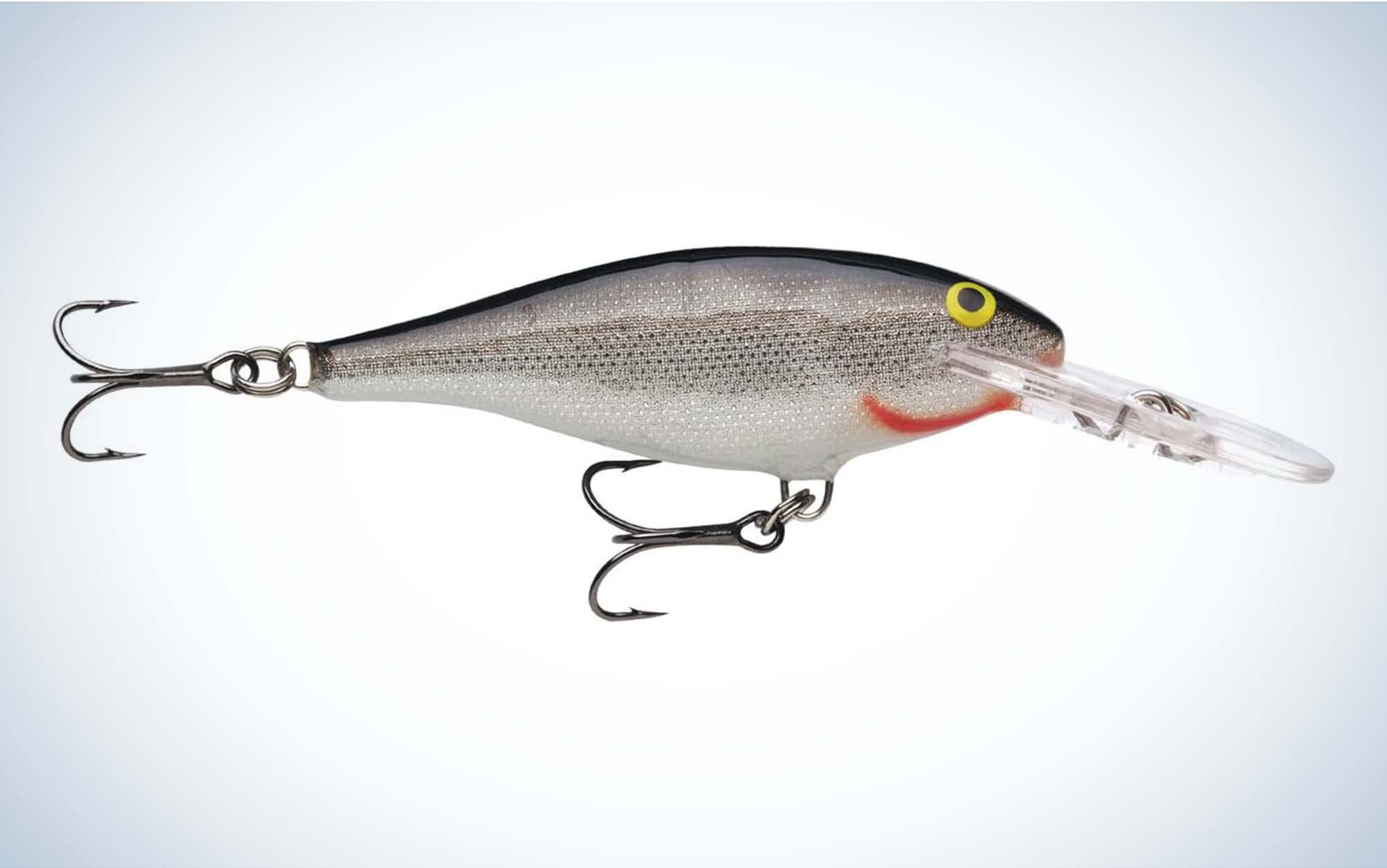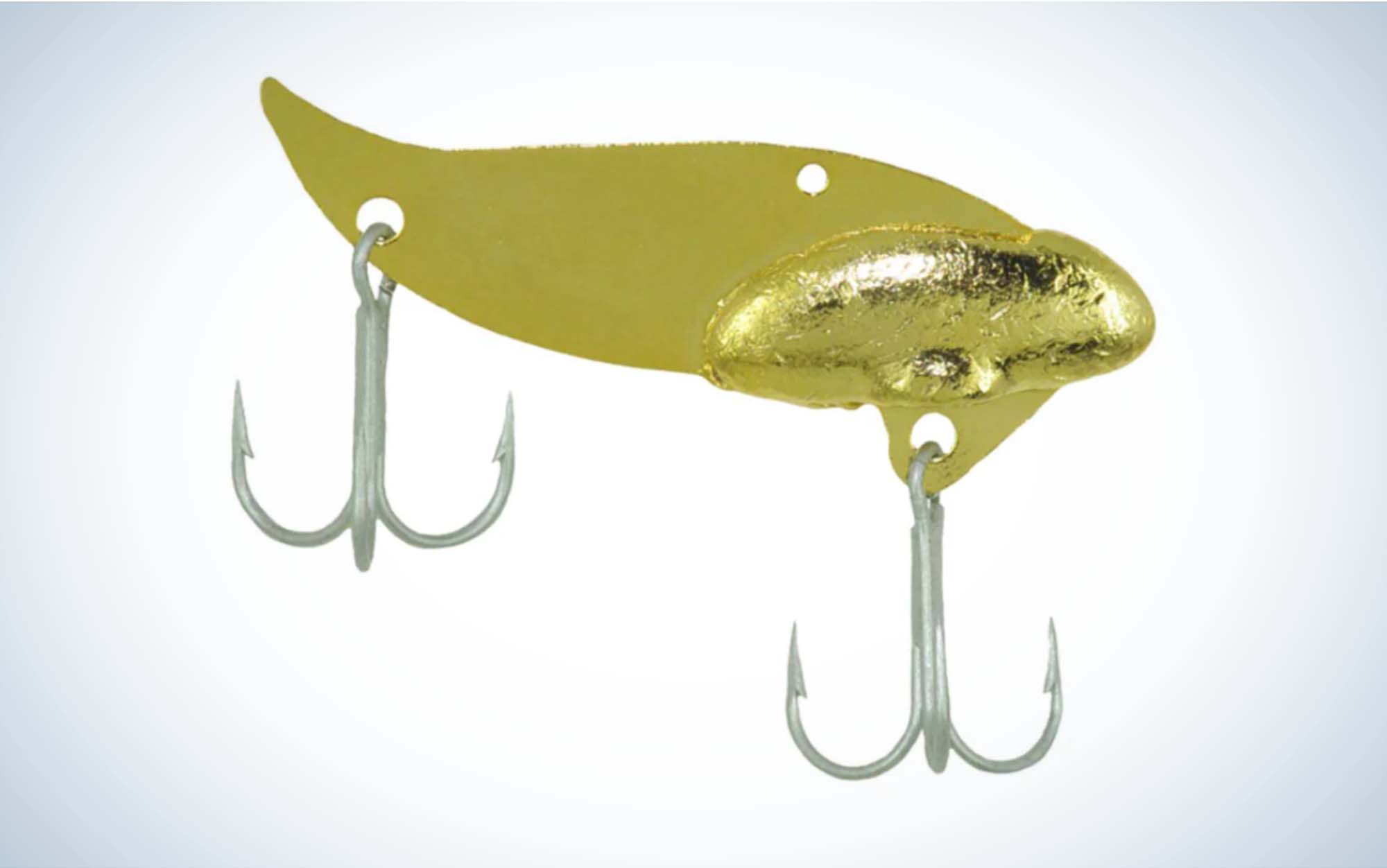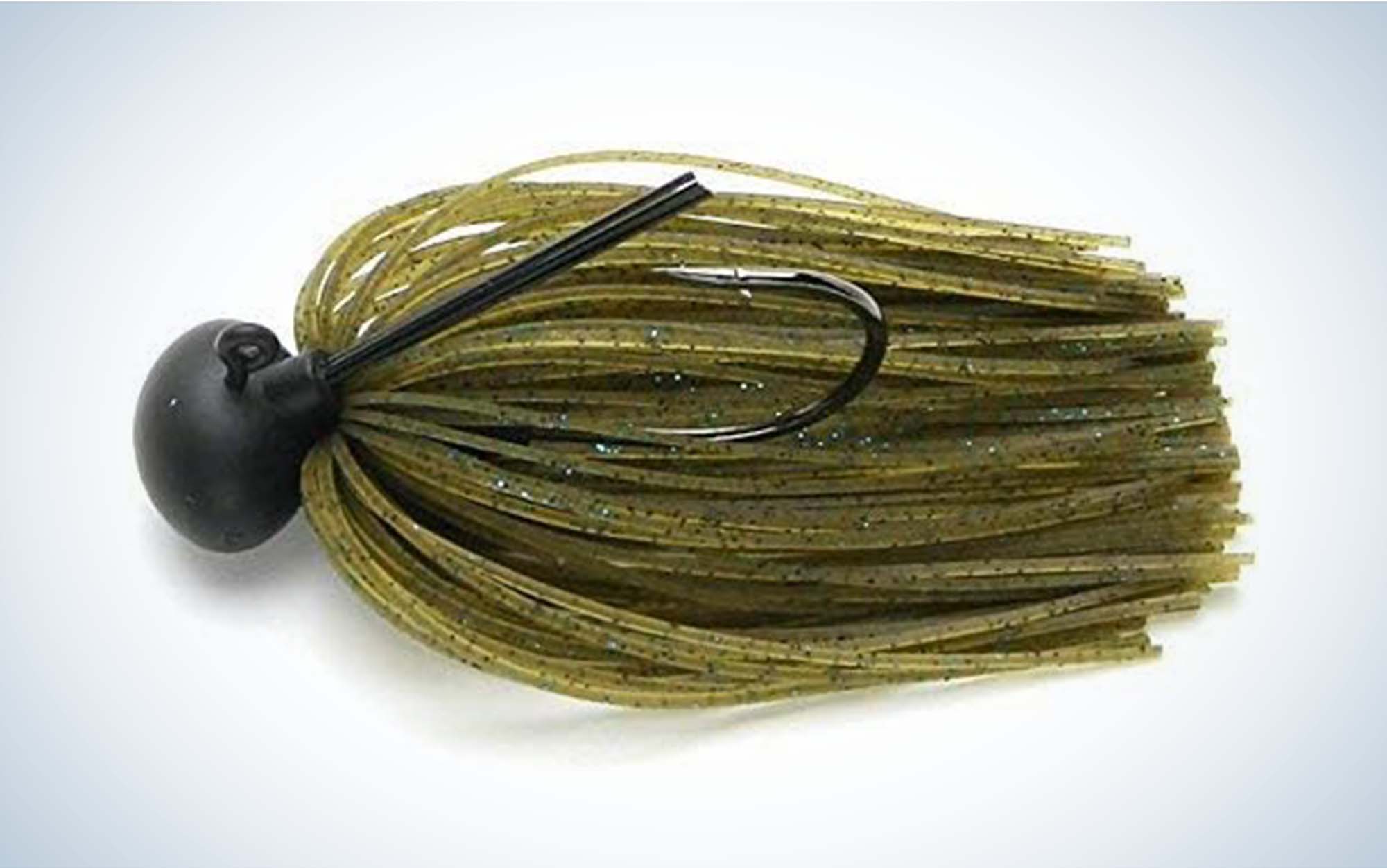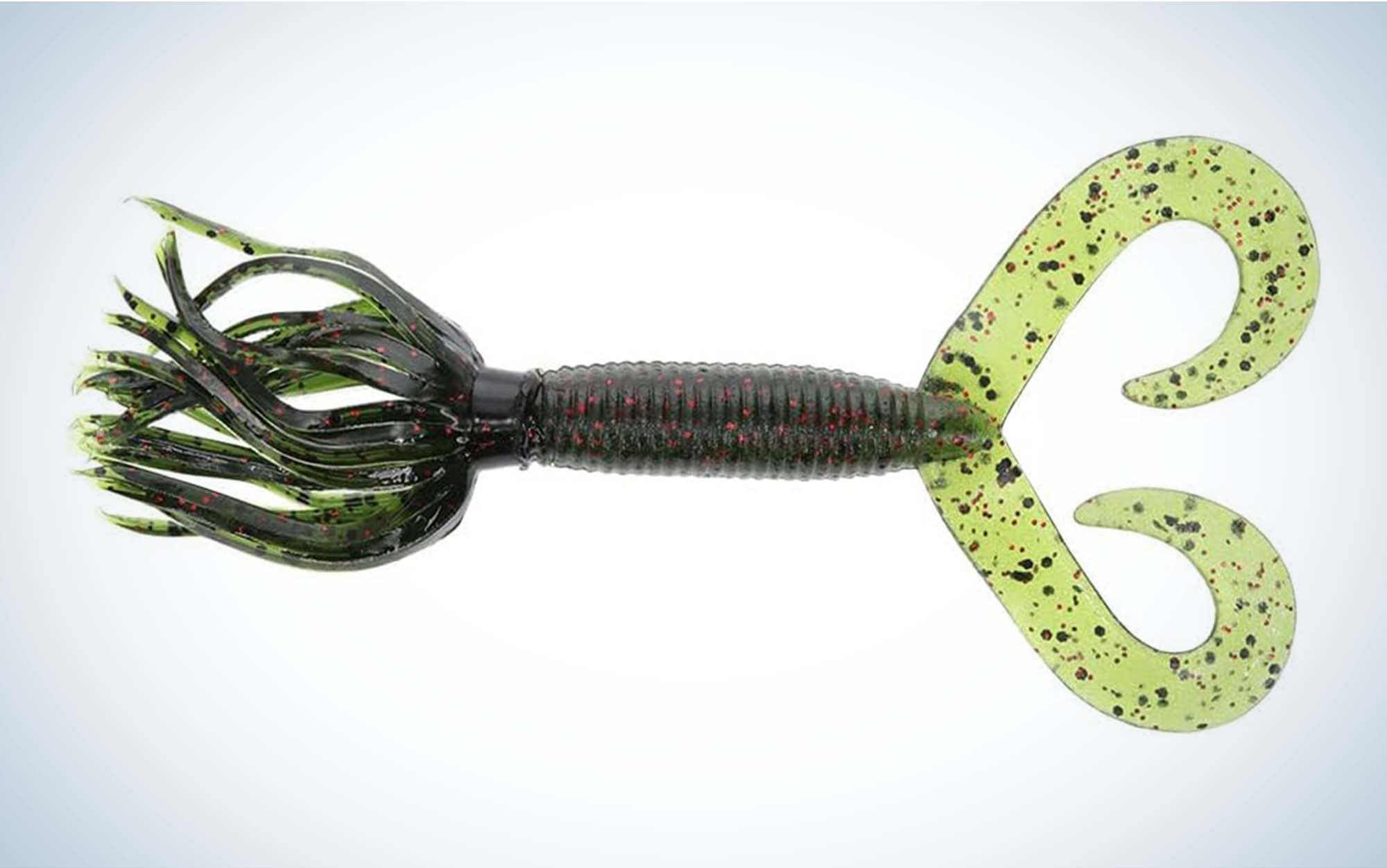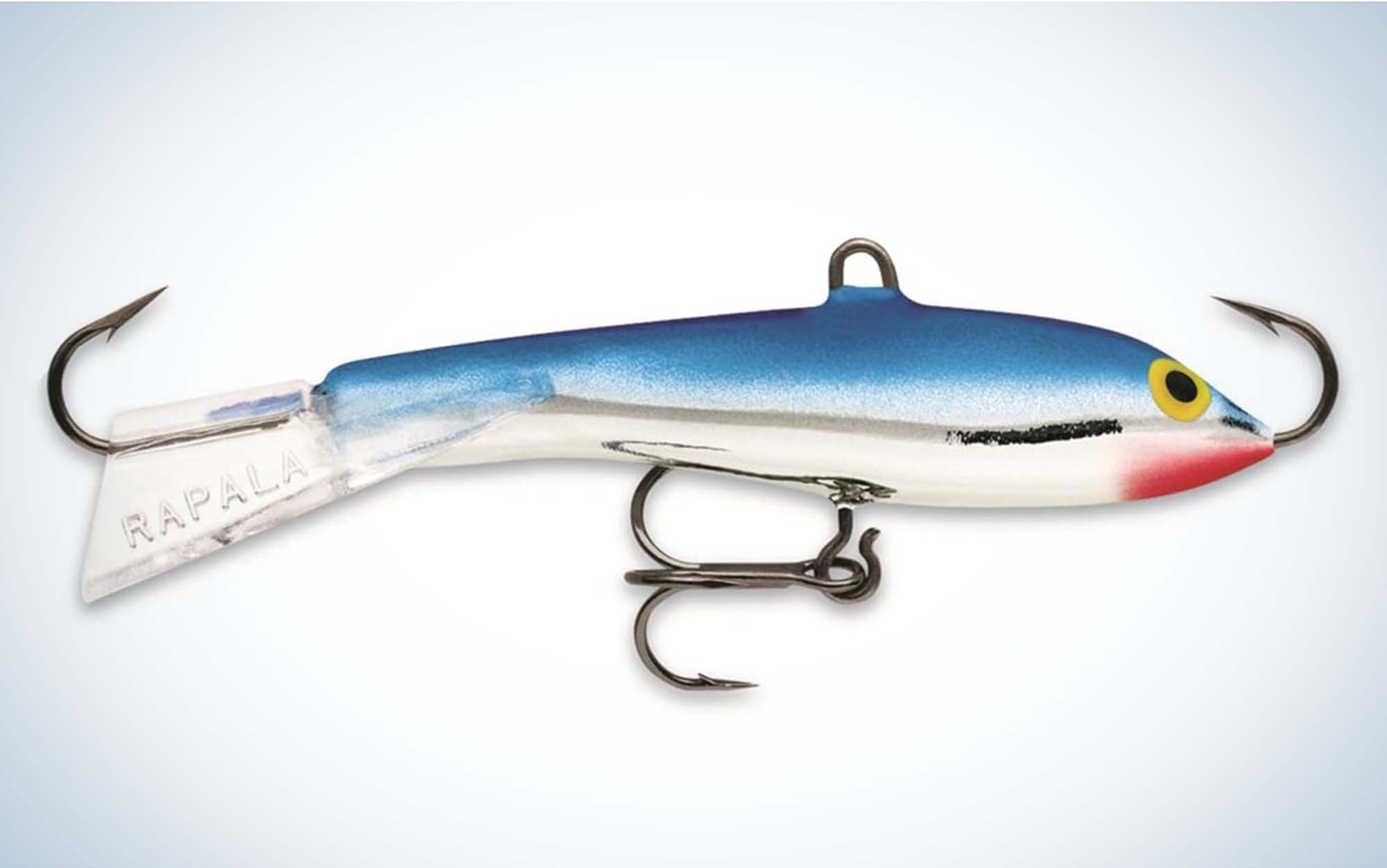We may earn revenue from the products available on this page and participate in affiliate programs. Learn More ›
Published Jul 7, 2023 1:37 PM
The best winter bass lures all provide an easy meal for bass that aren’t inclined to chase them very far. Just as you slow down in the coldest months, so too does your quarry. But in some respects, that’s a feature, not a bug, because once you find them, they can be easy pickings.
That’s partially because bass tend to gang up in predictable places when the water is at its coldest, and while they’ll eat less often, they still need to pack on the calories. It doesn’t hurt that they’re usually at their heaviest weight. Most importantly, I like this time of year because I often have the water to myself. Not just no other anglers, but no jet skiers or wakeboarders, either.
In addition to choosing the right lures, you’ll need to fine tune your gear and clothing to ensure that when you get a bite, you’re in a position to capitalize. That’s easier said than done, but focus on high percentage areas, and it’s possible to have the day of a lifetime in between sips from your thermos. Here are six of my favorite winter bass baits for times when most people would rather be at home.
How I Chose the Best Winter Bass Lures
I don’t really hunt, and don’t care much for hockey or basketball, so I have a lot of free time in the winter that I spend chasing bass. Over the years, I’ve developed a repertoire of clothing that keeps me warm and agile, so I don’t have to take any days off but the worst of the bunch. I spend a lot of time on a local power plant lake, as well as on tidal and free-flowing rivers, and on the never-frozen bass fisheries of Mexico, Texas, and Florida. Mostly I’ve learned that the need to slow down is near-universal, but there are key ways to trigger strikes, whether the water is 33 degrees or 73 degrees when the days are at their shortest.
Read Next: Best Fishing Rain Gear
Best Winter Bass Lures: Reviews and Recommendations
Best Crankbait for Winter Bass: Rapala Shad Rap
Key Features
- Balsa construction
- Thin-bodied, shad-shaped design
- Multiple sizes, plus jointed versions
- Wide range of colors
Pros
- Runs true at depth and speed
- Buoyant to back out of snags
- Each one is hand-tested and tuned
Cons
- Casts about as well as a potato chip
Building on the company’s Finnish precision heritage, Rapala introduced the Shad Rap 40 years ago, and while many other manufacturers have tried to imitate it, none have surpassed its wintertime fish-catching ability. It’s fine to burn it in the fall and early spring, but in the coldest months, you’ll want to c-r-a-w-l it across gravel banks and over likely flats. The balsa body is hyper-responsive and remarkably tough for such a seemingly delicate bait, and every year it produces giants. You can cast the larger sizes on baitcasting gear, but particularly in the wind, the smaller ones demand spinning tackle, and the Shad Rap is highly affected by changes in line size. The only drawback beyond that is that it catches everything that swims, so if you’re specifically targeting bass, you may occasionally be interrupted by other species.
Best for Imitating Dying Shad: Silver Buddy Blade Bait
Key Features
- ¼, ½, ¾, 1 and 2 ounce sizes
- Three line tie positions for different actions
- Armed with two treble hooks
- Casts like a bullet
Pros
- Simple, affordable construction
- Metallic patterns resemble universal baitfish
- Cast a mile, and can be felt even with cold hands
Cons
- Tends to get snagged a lot
The tadpole shape of the Silver Buddy has the ability to resemble just about any forage fish, and while they look primitive, they’re precisely balanced to act realistic when pulled upward or allowed to fall. They get to the bottom quickly, stay in position, and respond well to both subtle and abrupt manipulations. Many of the bites will come on the fall, and you’ll set the hook when it just “gets heavy.” While they’re best in deeper water, anglers on many tidal rivers use them around dock pilings and marinas, often in less than 2 feet of water. One drawback is that the hooks grab onto cover, but can be leveraged by bass to get away. Consider adding split rings or loops of braided line to attach the hooks and provide better landing percentages. If you’re fishing for bass corralling schools of shad, this is one of the best winter bass lures.
Best for Giant Fish: Keitech Tungsten Football Jig
Key Features
- Dense tungsten head
- ¼, 3/8 and ½ ounce sizes
- Super-soft silicone skirt material
- Double barbed keeper
- Gamakatsu Hook
Pros
- Tungsten head maximizes feel and ability to get into tight places
- High-quality hook for tentative biters.
- Ten-strand fiber weedguard
Cons
- Some anglers might not like “raw” unpainted heads
A jig can be moved slowly and deliberately, tempting bass that don’t want to eat, but know that they need to take in major calories to get through the winter. But not just any jig will do. You need one that transmits feel through gloved hands and hard-to-manage fluorocarbon, whether you’re fishing a rock pile in 3 feet of water or 30; and then it needs a hook that will penetrate a bony mouth when you feel that is-it-or-isn’t-it telltale tap. This modernized version of the age-old “leadhead” substitutes tungsten, and you can pair it with a plastic chunk or craw, but sometimes it pays to go with an old-school pork trailer for added scent and action.
Best for Rocky Terrain: Yamamoto Double Tail Hula Grub
Key Features
- 4- and 5-inch sizes
- Wide range of colors for all water clarities
- Super-soft plastic construction
- Salt-impregnated
Pros
- Can be rigged a number of ways, including on a football head jig or a Texas Rig
- Soft so fish hold on for a long time
- Even at rest has loads of action
Cons
- Soft bodies may tear up prematurely
The Hula Grub was developed around Arizona’s Lake Powell specifically for use on its tall bluffs and rocky outcroppings. However, it found a home with winter bass anglers across the country, from the Pacific northwest to the free-flowing smallmouth waters of the east. It most closely resembles a crawfish, but also comes in shad colors to imitate baitfish, or even bluegills. This soft plastic provides a lot of bulk in a compact package, and can be fished on a super-light weight shallow, or dragged and stroked across deep cover on a one-ounce football head. Either way, it stands up in a fighting position that screams to hungry bass that it’s an easy meal, which makes it one of the best winter bass baits.
Best for Bass Schooled Up on Structure: Rapala Jigging Rap Ice Jig
Key Features
- Sizes from 1/8 to 7/8 ounce
- Wide variety of natural and gaudy colors
- Single hooks on each end with a belly treble
Pros
- Erratic action
- Few other anglers likely to be throwing them
- Sticky-sharp hooks
Cons
- Unpredictable action may make it tough to present precisely to cover
The Jigging Rap was made to be fished vertically through the ice, but when bass show up like a Christmas tree on your graph, a tightly packed school, it may be the best trigger possible to get them to commit. If they’ve seen tons of jigging spoons and other vertical presentations, they likely won’t be tired of this one. It’s odd, for sure, with single hooks on each end and a treble in the middle, but bass tend to get stuck hard on these little hooks, and they won’t come off. They do get snagged, so may not be the best choice in heavy brush, but in relatively open water this oddball excels.
Best for Suspended Bass: Yum Yumbrella Flash Mob Jr.
Key Features
- Five wires for hooks
- Willowleaf or Colorado Blades
- Lifelike head for line tie
- Customizable with different soft plastics
Pros
- Attracts suspended fish when nothing else will
- Blades add vibration
- Smaller profile than the original Yumbrella, but still strong
Cons
When the “Alabama Rig” (AKA, “Castable Umbrella Rig”) first became popular, the initial reaction was shock, followed by outrage in some corners. This winter bass lure (it’s great all year too) is so effective in some situations that major tournament trails have restricted its use or banned it altogether—but if you don’t have those limitations it’s remarkable how well this hunk of cobbled-together hardware resembles a school of baitfish. Some anglers like a larger version, or one with more or fewer hooks, or without blades, but this model is a good all-around choice. It’s easy to throw, not too hard to retrieve, and if you throw it enough there’s a good chance at some point it’ll come back with two or more fish attached. Experiment with different jigheads or hooks and soft plastics until you find the ones that work best on your home waters.
Like most anglers, I look forward to the spring when bass move shallow, feed up, and then get on the beds. They’re big, and they’re aggressive. At the same time, I’ve learned not to rush winter. First of all, I’ll generally have a lot of elbow room on the water, and the fish are not only patternable but tend to gang up, often on vertical cover and structure. That’s made electronics a bigger part of my game, but just because you find them doesn’t mean you can catch them. I constantly have to remind myself to slow down and keep a proven bait in the strike zone for extended periods of time.
Read Next: Garmin Echomap and Livescope Review
Things to Consider When Choosing Winter Bass Lures
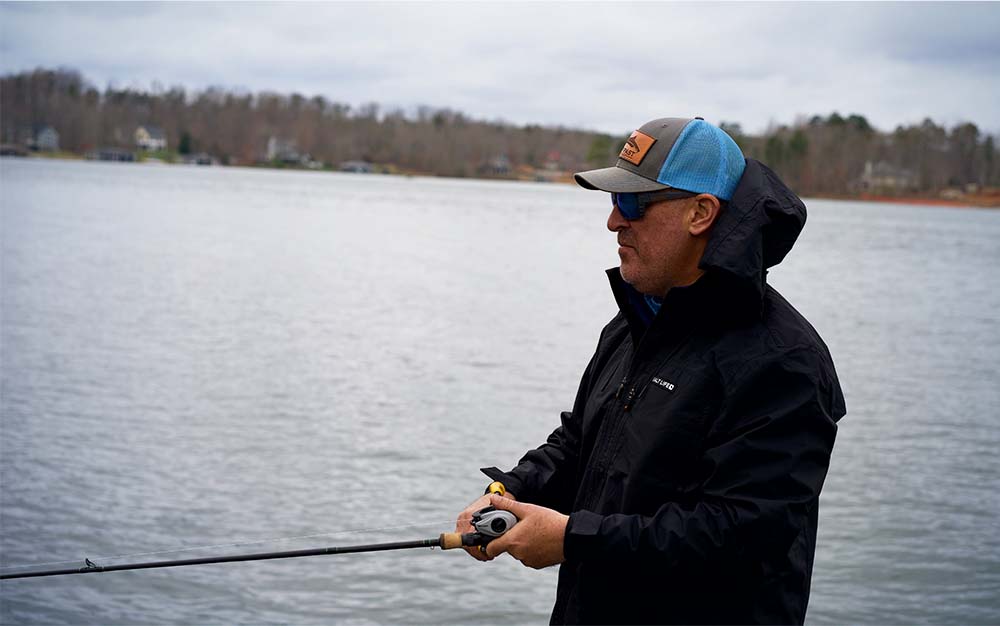
I tend to live at the extremes of lure sizes during the coldest months, choosing finesse techniques when bass are at their most lethargic, and oversized lures when I believe the biggest specimens might be looking to get full. They’re less likely to be aggressive, less likely to jump, and may sometimes strike halfheartedly, but they’ll also likely be at their fattest and they won’t hesitate to push their weight around. Accordingly, proper-functioning tackle is a must (a bit of silicone spray goes a long way with icy reels) as is fresh line and super-sharp hooks. You may be a bit uncomfortable, taking you off your game, so everything else needs to be firing on all cylinders.
Read Next: Best Spinning Rods
Final Thoughts on the Best Winter Bass Baits
The best winter bass lures won’t guarantee you a new personal best, but they will give you the edge in figuring out winter bass fishing. The other half of the equation is your ability to find fish, present lures, and detect strikes. But once you put it all together, winter bass fishing can be the most fun and productive time to catch them.

